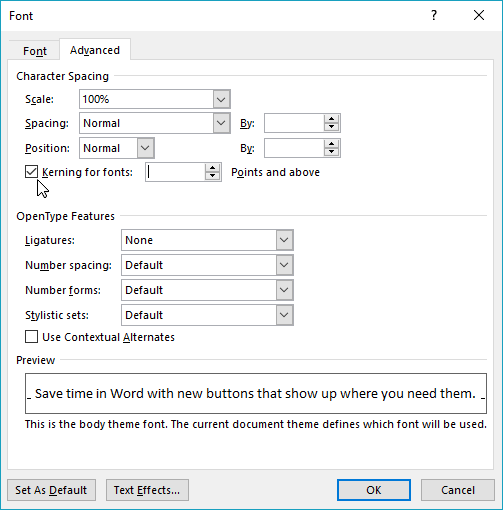Outlook 365 For Mac Email Replies Line Spacing

Format hard drive for mac on windows diskpart. You can replace the Drive, File Name, and the size as per your wish. Step 5: We can also add the type of the hard disk with the above command. Step 4: To create a virtual hard drive you need to type the command given below: create vdisk file=F: install.vhd maximum=15000 This command will create a new virtual hard disk of 15 GB, and the.vhd file will be stored in the F partition of my windows, and the name of the file will be install.vhd. To add the type, append the command with “ type=fixed” or “ type=expandable“. But the default type here is fixed since we didn’t mention it in the command.
[Update]: This article was updated on April 14, 2017. Users of Microsoft Outlook 2007, 2010, 2013 or 2016 often complain that the recipients of their emails say they contain double spaces between lines. This situation may happen in HTML formatted e-mails making the message look unclear and scruffy. The reason is the way the new Outlook handles new line tags in HTML messages. It is generally accepted in word processors that the Enter key starts a new paragraph while hitting Shift + Enter starts a new line of the text.
Double spacing in outgoing messages in MS Outlook 2007, 2010, 2013 and 2016 Posted on June 25, 2013 by Adam the 32-bit Aardvark [Update]: This article was updated on April 14, 2017. While composing mail in Outlook 2010, you may want to adjust the line spacing properly. Mostly users don’t look for a quick way to adjust lines and go for adjusting spaces manually. This post covers quickly adjusting line spacing while composing mail.
Mac vs pc for photo editing. The difference between starting a new paragraph and proceeding to the next line may seem subtle, still, it is important and known for a long time. The spacing between paragraphs is usually bigger than the spacing between regular text lines.
In HTML tag is used to start a new paragraph, whereas tag to move one line down. Unfortunately, Outlook 2007, 2010, 2013 as well as 2016 violate this rule and, from the perspective of a user writing a new message, there is no difference if they hit Enter, or Shift + Enter. The result is the same, the word processor behaves as if proceeding to the next line, whereas when we hit Enter the marker is being inserted, which means the actual beginning of a new paragraph. However, when we hit Shift + Enter, the tag is inserted, which means proceeding to the next line.
Inserting the tag and the tag looks the same to the user, which is caused by the way Outlook 2007, 2010, 2013, 2016 CSS style sheet was developed. Because there is no noticeable difference between inserting a new paragraph (see image below), and proceeding to a new line, users often hit Enter twice to get the effect of a new paragraph with spacing they are used to from other word processors, including Microsoft Word 2007, 2010, 2013 or 2016, which is an integral part of Microsoft Office 2007, 2010, 2013 or 2016.
As a result the users insert double paragraphs to their e-mails, which means two tag ( ) instead of a single tag, or hit Enter instead of Shift + Enter to go to the next line – as a result they insert the tag instead of. The problem appears when a recipient uses a mail reader which doesn’t support complex CSS style sheets used by MS Outlook. And there is quite a number of such readers. Personally, I have no clue what pushed the makers of Microsoft Outlook 2007, 2010, 2013 and 2016 to the idea of treating a new paragraph and proceeding to a new line, differently from other mail software makers, and differently from what is generally accepted and to which users are accustomed. What can Outlook users do to make their e-mails look the same on their and their recipients’ computers?

There is a number of possibilities, and everyone can choose the most convenient one, though each of the solutions has some drawbacks. First solution The first solution is to always use Shift + Enter when proceeding to the next line or next paragraph. In order to proceed to a new paragraph, users will need to hit Shift + Enter twice. The drawback of this solution is that text formatting, such as indents or bullets, is based on paragraphs, and if we want to use this type of formatting, we will still have to create a new paragraph hitting Enter, because double-hitting Shift + Enter inserts two tags instead of tag, which in HTML stands for a paragraph. Second solution If you want the Enter key to insert a new paragraph which will in fact have bigger spacing than a line space in a regular text, we can edit the Outlook style sheet used when composing a message. The style sheet can be found in NormalEmail.dotm file in%appdata% Microsoft Templates.
You need to open the file using Word and modify Normal style in such a way to achieve a 10 pts margin after each paragraph. To do this you should: • On the ribbon, right-click the Normal style and choose Modify. • In a dialogue screen, click Format, and from the drop-down menu choose Paragraph. • In the window with formatting properties, in the Indents (or Indents and Spacing in Outlook 2016) tab, type 10 pts under the Spacing section, in the After field.